The following guide gives you the basics on getting started with ClareVision NVRs and Camera setup.
Overview
The following article provide the following information:
- The basic functions of an NVR
- The basic functions of an IP camera
- Best practices for setting up an NVR
NVR's
The NVR provides two basic functions: it network attaches the cameras and provides storage. In fact, the NVR does very little else.
- Network services: the NVR provides a central place to access IP cameras. You can attach IP cameras directly to the ports of the NVR or leave the cameras on the LAN. The NVR can be configured attach to those cameras for purposes of centralized access and recording .Centralized access can be viewing on the web console or providing access to integrated solutions such as the ClareOne Panel or a home automation system such as Control4
- Recording services: the NVR also provides recording services. You may record full time video or motion events, smart events, alarm events or any combination.
Note:
The NVR does NOT create events. The camera creates all events and the NVR simply records them. Why are the settings in the NVR for motion events, smart events and alarm events? Convenience. The NVR is simply configuring the camera so you do not have to log into each camera to configure an event. Check it out: configure an event in the NVR and log into the camera. You will see the exact settings you configured in the NVR in the camera settings web console.
Tip:
Since many ClareVision cameras come with SD cards installed, when should I use an NVR?
- Full time recording: the SD Cards are not useful for full time recording. A 4MP camera will overwrite in less than one day on full time record
- Storing multiple event types: the camera will store motion OR smart events OR alarm events. Use the NVR if you need multiple event types stored
- Camera count: if you are getting above 2 to 3 cameras, it is probably time for an NVR. Centralized access and storage flexibility will be very useful in those use cases.
Note:
A word about ports on the NVR. Ports and channels often get used interchangeably. For Clare Controls, an NVR port is a PoE port on the back of the NVR. Each port is a "physical channel". For example, an eight channel NVR has 8 physical channels or ports. A virtual channel is a channel that is connected to the NVR via the LAN port, not a PoE port. Therefore, a channel is a connection between the NVR and a camera whether physically on a port or virtually via the LAN. The following table details the channel count by model number for ClareVision NVR's:
| Model | Physical Channels | Virtual Channels | Total Channels |
| CLR-V200-4PNVR1 | 4 | 5 | 9 |
| CLR-V200-8PNVR2 | 8 | 8 | 16 |
| CLR-V200-16PNVR4 | 16 | 9 | 25 |
IP Cameras
The IP camera is where almost everything interesting happens. The IP camera collects, analyzes and forwards video streams and snapshots to one or more clients. The camera can provide service to a mobile app, the NVR and an integrated control system simultaneously. It also provides multiple streams of video in different resolutions and frame rates so the client device can select the stream it can process. The following provides a high level reference highlighting the differences between the Value Series and Performance Series ClareVision IP cameras:
| Feature | Value Series | Performance Series |
| Motion | ✔️ | ✔️ |
| Advanced Motion | ✔️ | |
| Smart Events | ✔️ | |
| Streams | 2 | 3 |
| Starlight | ✔️ | |
| Available Varifocal | ✔️ | |
| Fixed Lens | 3.6mm | 2.8mm |
| Color at Night | Coming Soon |
In summary, the camera is where everything interesting happens. The NVR simply provides convenient access and storage.
Next, let's set up an NVR with ClareVision and ONVIF cameras...
Setup a ClareVision NVR and IP Cameras
What You Need
Learning by doing is far better than reading articles and watching videos. Before you proceed, you will need the following:
- ClareVision IP camera: we will use a Performance series camera in our exercises.
- ClareVision NVR
- A computer with internet access
- A mobile phone with ClareVision installed. (Do not install ClareVision Plus - that is our legacy app)
- A wired connection to your LAN
- An 8 port PoE switch (you will not leave this at the job site)
Step One: Install the NVR on Your LAN
The following image shows the connection scheme for an ethernet switch connected to an NVR and camera.
Tip:
If you are using an ethernet switch or router with a built in switch, the switch port will have LED's indicating connection status. One of the LED's will be the link light. The link light indicates whether data is being transmitted to the NVR. The link light will often flash.
If your link light is flashing on the ethernet switch you are passing data to the NVR. Success!
Step Two: Find the NVR on Your LAN
All ClareVision NVR's ship with DHCP turned on. DHCP simply means the router will assign an IP address to the camera when it boots up using the LAN IP address scheme. Example:
- Router IP Address: 192.168.1.1 (typical)
- IP address range that may be available: 192.168.1.2 through 192.168.1.255
- Router will assign an address like this: 192.168.1.x, where x can be any number between 2 and 255.
How do you find your NVR so you can login and configure? Download the IP search tool here.
Install and Launch IP Search and select "Search"
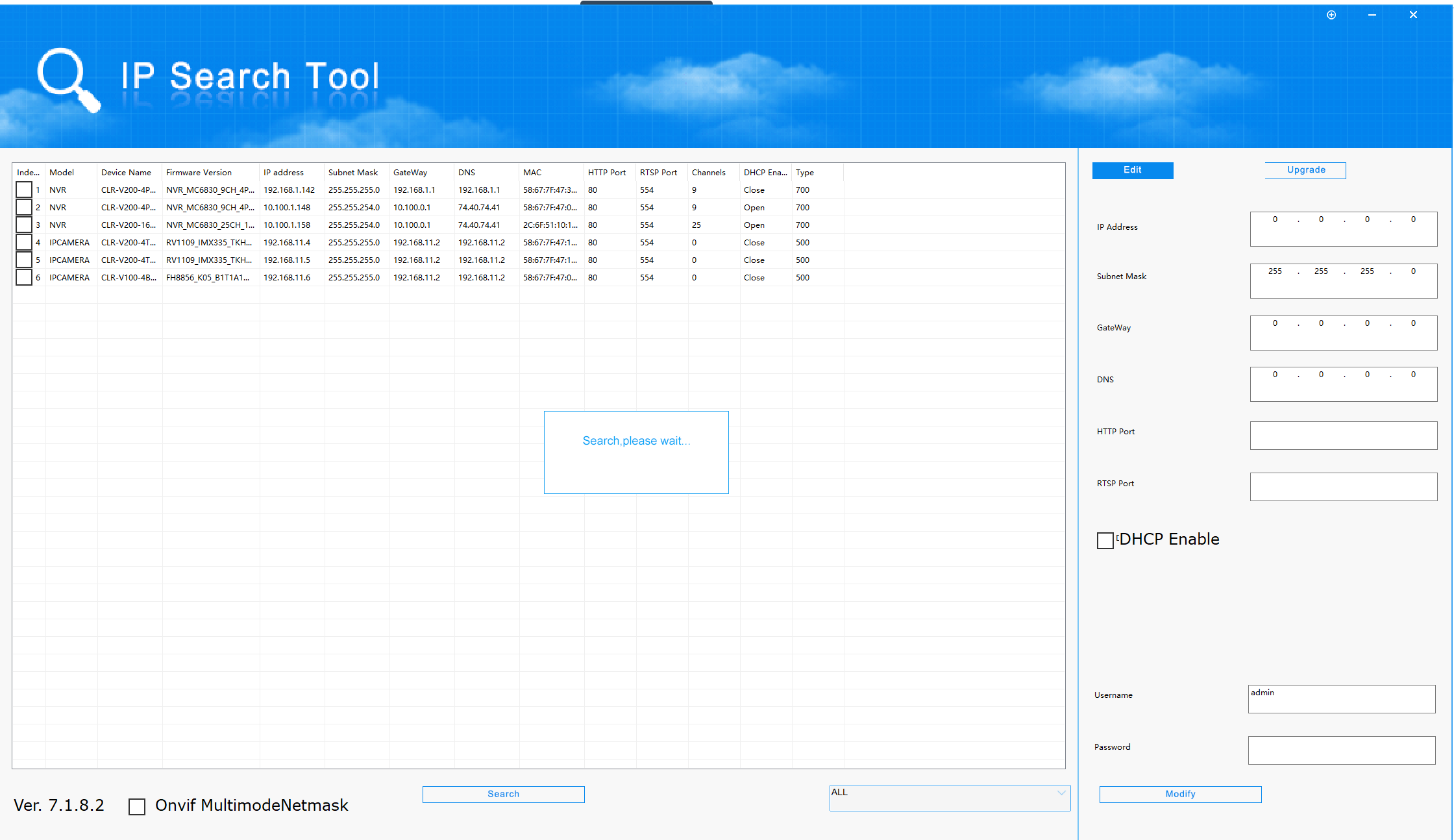
All IP cameras and NVR's regardless of their IP address will appear in the results window. The model numbers will appear as well so you know which one is an NVR.
Next launch a web browser (Chrome or Edge) and enter the IP address of the camera you just installed.
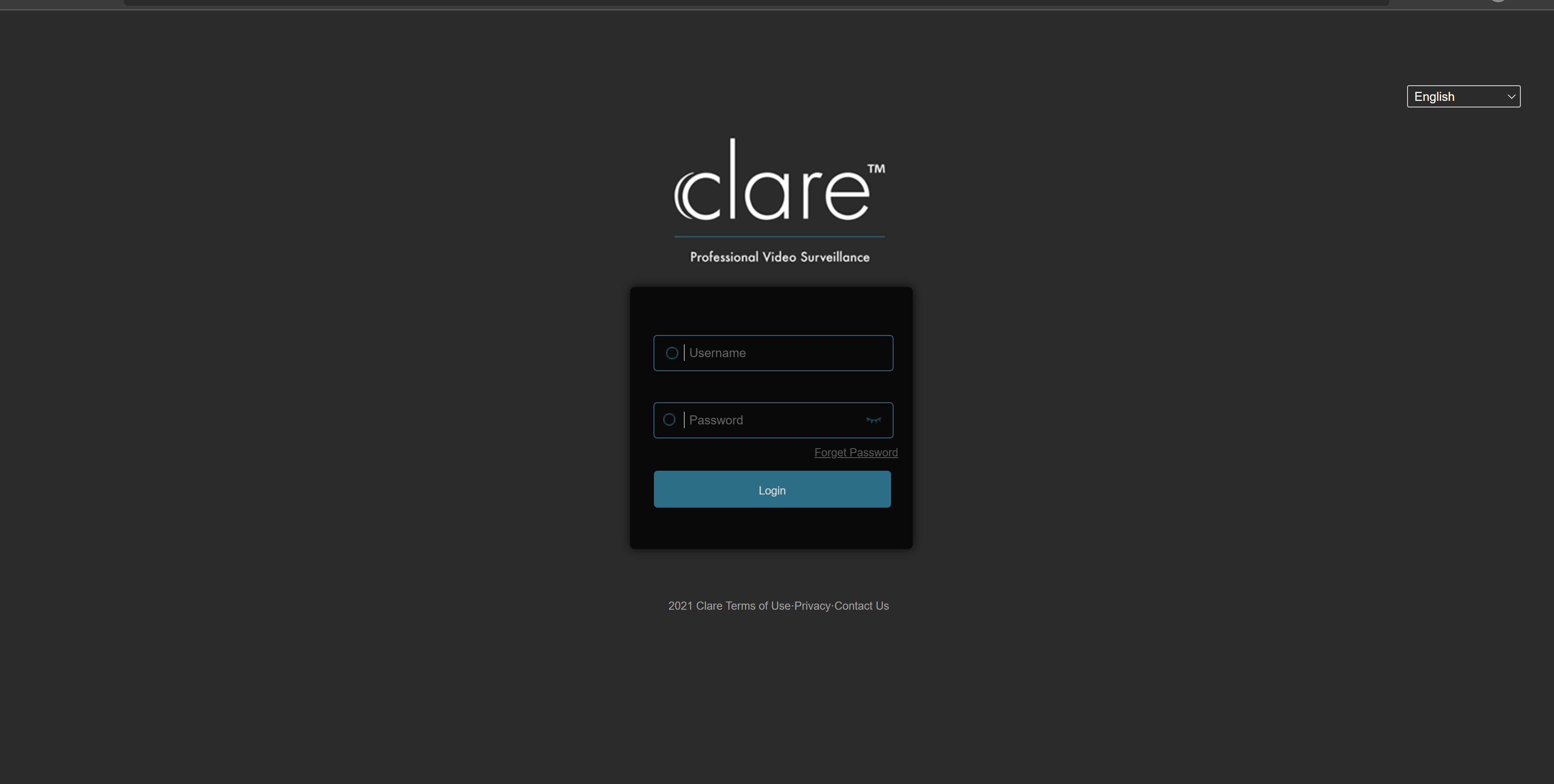
The default USERID is: admin (not case sensitive)
The default password is the first six characters of the UUID. The UUID can be found on the NVR label or the quick start guide.
Step Three: Download the Plugin
The NVR's and cameras support Chromium browsers. We test on Microsoft Edge and Google Chrome. The plugin dramatically improves video performance vs. browsers without a plugin.
Note:
The plugin for the NVR is different than the camera plugin.
NVR plugin: LsNXVRPlugin.EXE
Camera plugin: LSIPCPlugin.EXE
The plugins can be downloaded directly from the web interface of any camera or NVR
See the upper right corners of the NVR web user interface
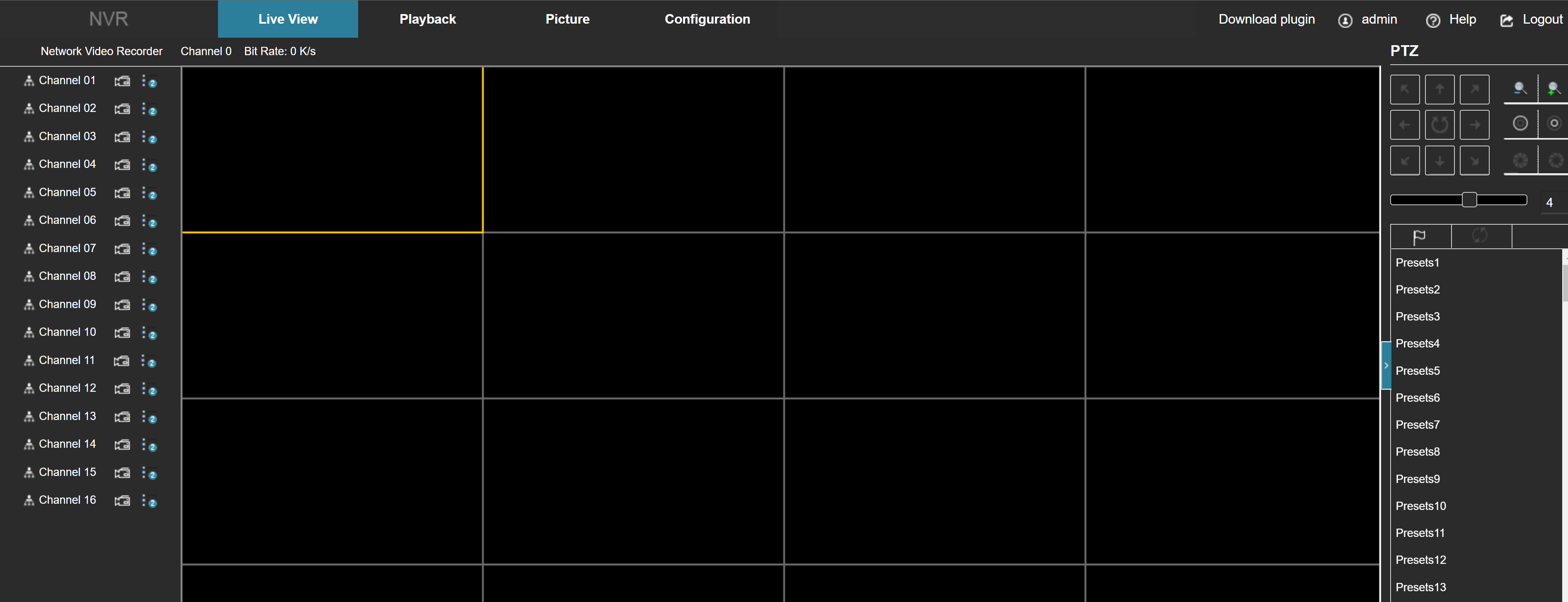
Step Four: Update the NVR to the Latest Firmware Release
Clare Controls releases NVR firmware with new features about once every four months. Chances are, your NVR will need to be updated when you take out of the box. There are two ways to update the NVR firmware.
You can go to the NVR firmware database is located here and download the firmware file. You then select manual upgrade by selecting the Configuration tab, Maintenance/Manual Upgrade
OR
Log into the NVR and go to the Configuration tab and click on Maintenance/Online Upgrade to review the firmware version.
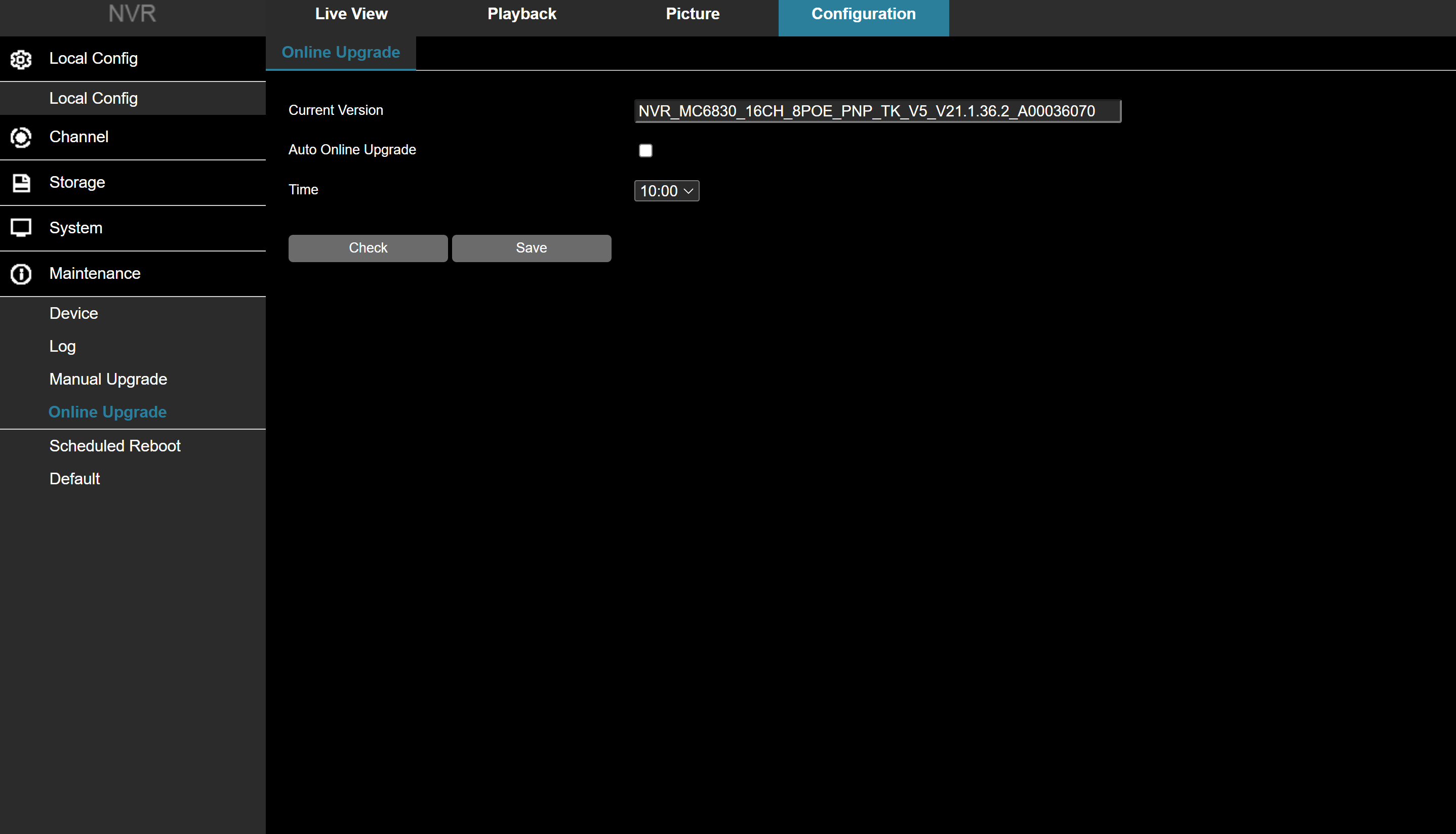
Click on "Check". The NVR will go to our OTA servers and check for an upgrade. If one is available you will be prompted to accept the upgrade. You should always accept.
Go HERE for a guide to quickly updating the firmware on your cameras
Next, we will add cameras to the NVR. We will break this down into three steps:
- Adding ClareVision cameras to the NVR by attaching to the NVR physical channels
- Adding ClareVision cameras to the NVR by attaching them to the NVR virtual channels on the LAN
- Adding ONVIF cameras to the NVR (Luma, ClareVision Plus/Legacy, Hikvision etc)
Step Five: Add ClareVision Cameras to the PoE Ports
Attach the camera to the NVR physical PoE port. This connection must be direct and cannot be routed through an ethernet switch on the way to the PoE port. Once connected, wait until the two LED's on the NVR are illuminated.
The green LED is the PoE power indicator. If it is lit, the NVR is supplying power to the camera. The amber LED is the link light. When this is flashing, the NVR is communicating with the camera.
Now simply wait a couple of minutes.....
Go to the Live View tab and click on the left side of the icon next to the channel number to which you connected the camera. A small green indicator will light up just to the left of the "C" in the word channel. The camera video should show up in the appropriate tile. In the example below, the camera is connected to physical channel one and shows up in tile number one on the Live View Screen.
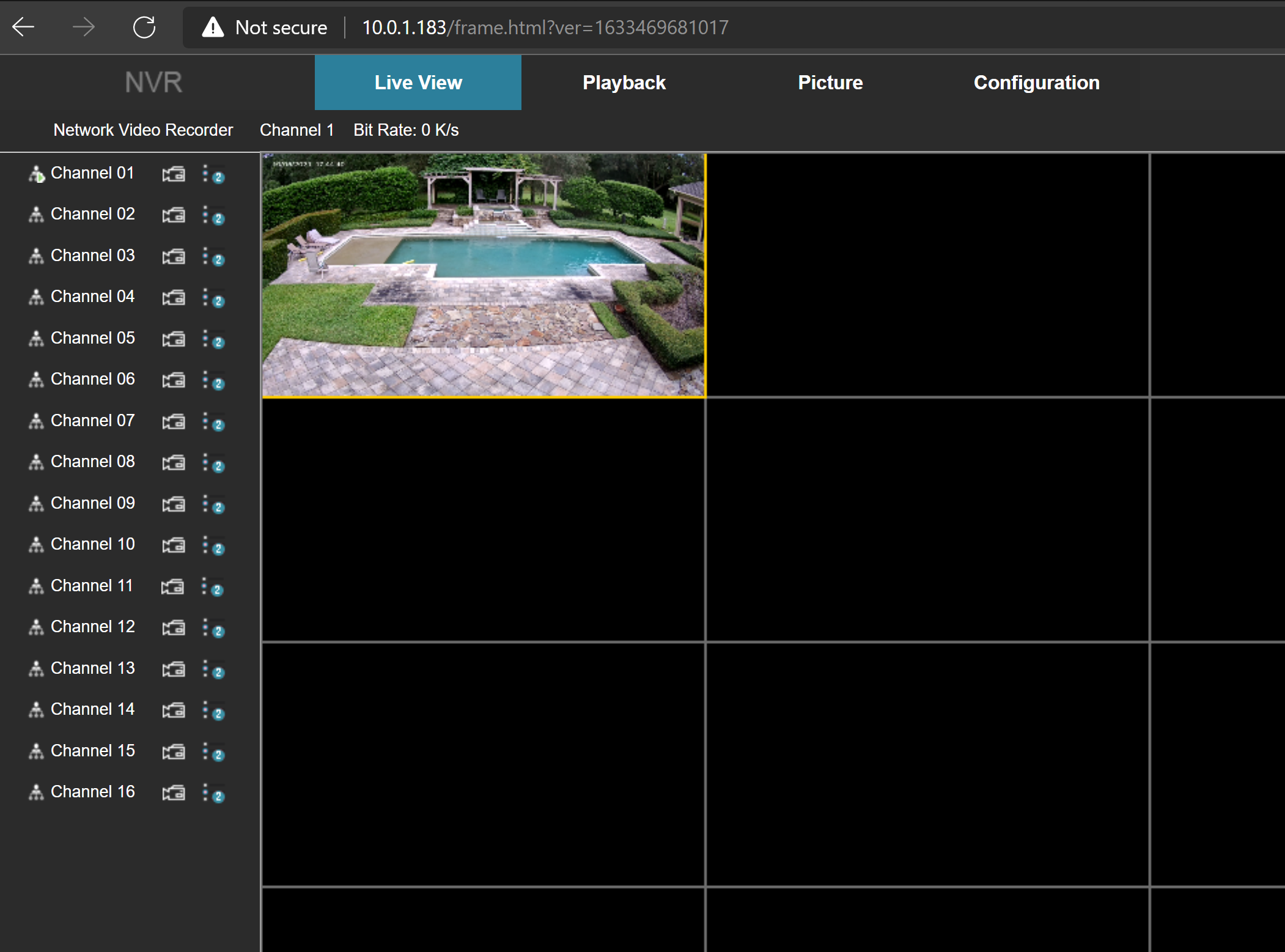
What just happened?
The NVR powered the camera and the camera booted up. Upon boot-up the NVR discovered the Clare Camera, added it to the channel list based on the port number to which it was attached, the NVR assigned the camera a static IP address based on the NVR's private IP subnet and changed the camera UserID and password to match the NVR admin UserID and password. That is Plug-n-Play.
You can continue adding cameras to the physical channels of the NVR and all will behave as noted above.
Step Six: Add ClareVision Cameras to the Virtual Channels (on the LAN)
Let's assume you had no way to physically route a wire back to the NVR, but wanted the camera on the NVR. No problem - you are now going to add the camera to a 'virtual channel' on the NVR.
To do so, go to the Configuration tab, Channel/Camera.
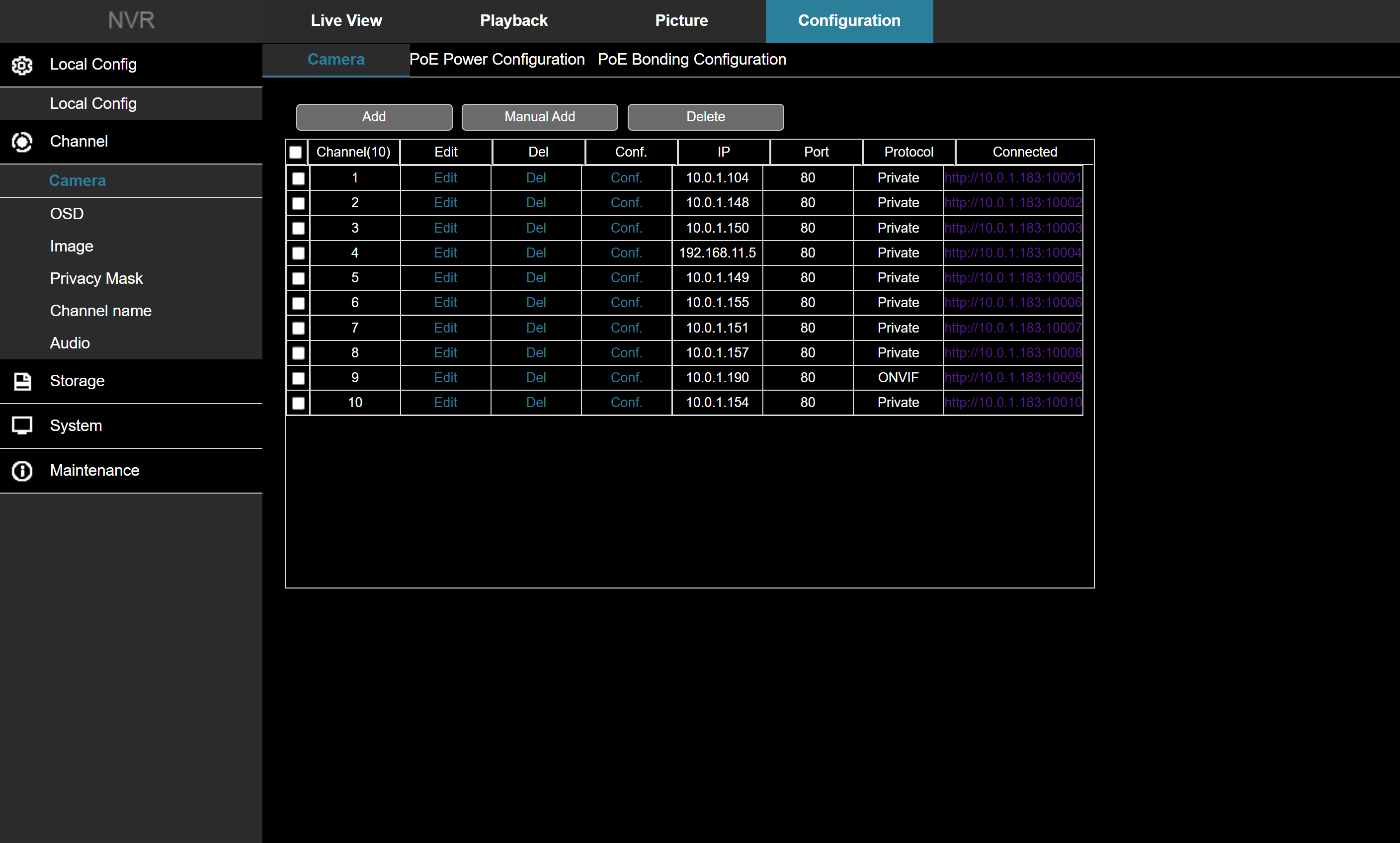
This NVR is the CLR-V200-8PNVR2, 8 channel NVR. Notice it has 10 cameras on it. To discover new cameras, click on the "Add" button.
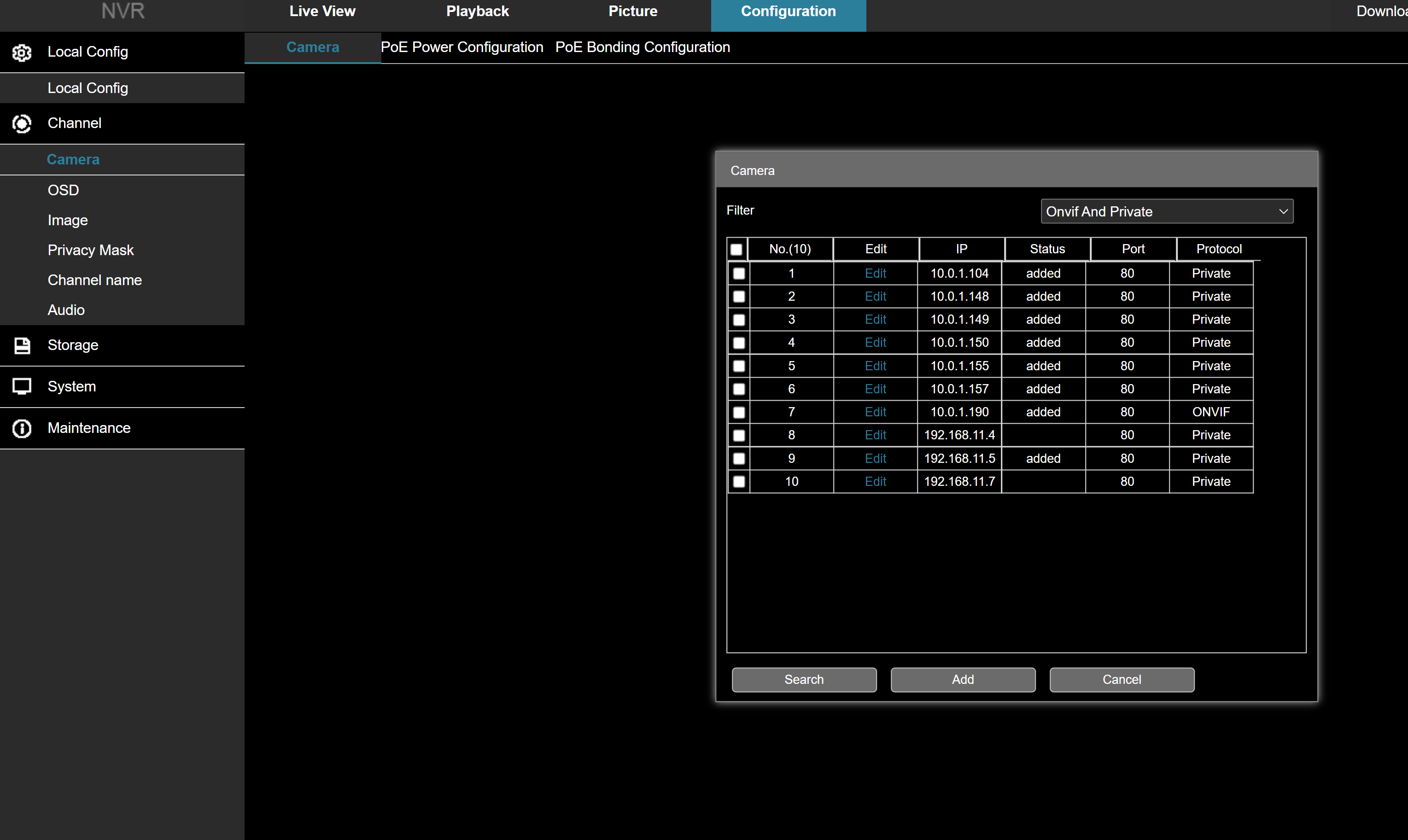
What just happened?
Based on the selection in the dropdown box in the upper right corner, the NVR just scanned all physical ports and the LAN for any ClareVision (private) and ONVIF cameras. It found two that were not on the NVR prior to the scan.
If a camera shows up as private and you click in the white box on the left side of the row, and click "Add". The camera will be added exactly the same way it would have been added had it been on a PoE port - Plug-n-Play.
That is really all there is to adding ClareVision cameras to a ClareVision NVR.
Step Seven: Adding ONVIF cameras to a ClareVision NVR.
Let's assume the ONVIF camera is on the general LAN like in step six above. Follow the exact same procedure as in step six, plus the following:
In the channel screen below, click on the edit link in for the ONVIF camera you just added

The following screen will pop up:
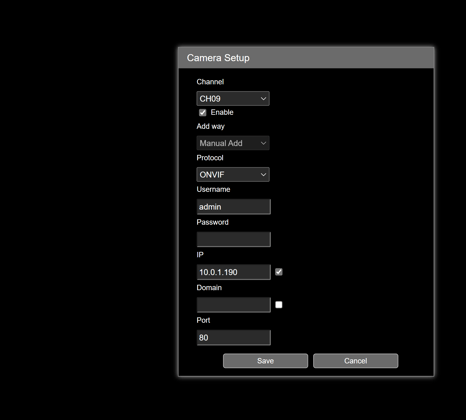
Enter the ONVIF UserID and Password for the discovered camera, click "OK".
Note:
ONVIF must be enabled in the camera being attached to the ClareVision NVR. The NVR uses WS-Discovery to find ONVIF cameras. If ONVIF is not enabled the NVR will not discover the camera. Several Hikvision models require and ONVIF user to be enabled to allow connection to the camera via ONVIF. Consult your installation manual for the camera you are trying to attach to the ClareVision NVR if it does not discover for additional details.
This ARTICLE details adding an ONVIF camera to a PoE port on the NVR. The process is slightly different than detailed above.
Step Eight: Aligning Connections to Channels on Your NVR
The NVR will assign channels based on either the physical connection (PoE port 1, 2 etc) or based on the order in which they were attached for virtual channels. The first camera added to the NVR on the general LAN will be assigned to channel 9, the second to channel 10 etc.
Let's say you had 10 cameras, but only ONE on a physical channel / PoE port. The Live View screen would show a camera in tile 4 since that is where it was attached. The next 8 cameras would automatically be assigned to ports 9 through 16.
Two problems - what about the 10th camera and the NVR Live View Screen would be very awkward showing one camera on tile 4 and 8 cameras on tile 9-16.
This where PoE bonding configuration becomes very handy.
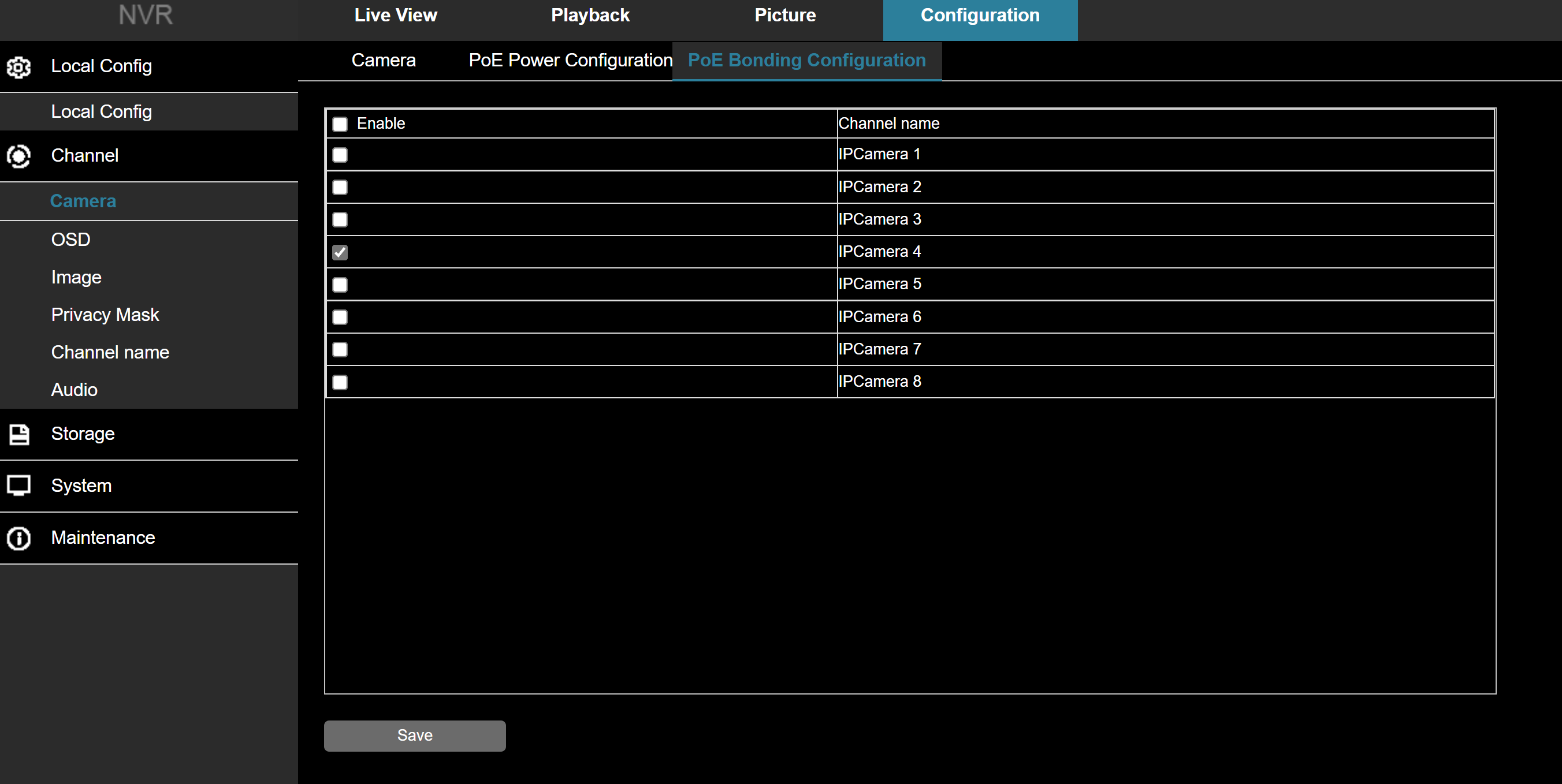
PoE bonding allows you to decouple the logical connection between a physical channel and a channel number. In the example above, all channels besides channel 4 are unbonded from the physical ports. This makes 7 of the first nine channels available for virtual channel assignments.
Two problems just got solved:
- We now have enough channels for the 9th camera located on the LAN
- The channel assignments are now 1-10 making the NVR preview interface very organized.
It was the un-bonding process that allowed the channel list to appear as orderly as it did in the above example.
Caution:
The channel list is very important to get organized up front before you start configuring cameras and recording schedules. Get your list sequential and in the order in which you want channels to appear in the Live View screen before you do anything else. You can see in the edit screen shown above the channel number is configurable. Do all of this organization before you start setting up recording, integrating to ClareOne, Control4 or setting up the mobile app.
If you get the channel list twisted up and want to start over, you can default the camera list alone by going to the Configuration tab Maintenance/Default
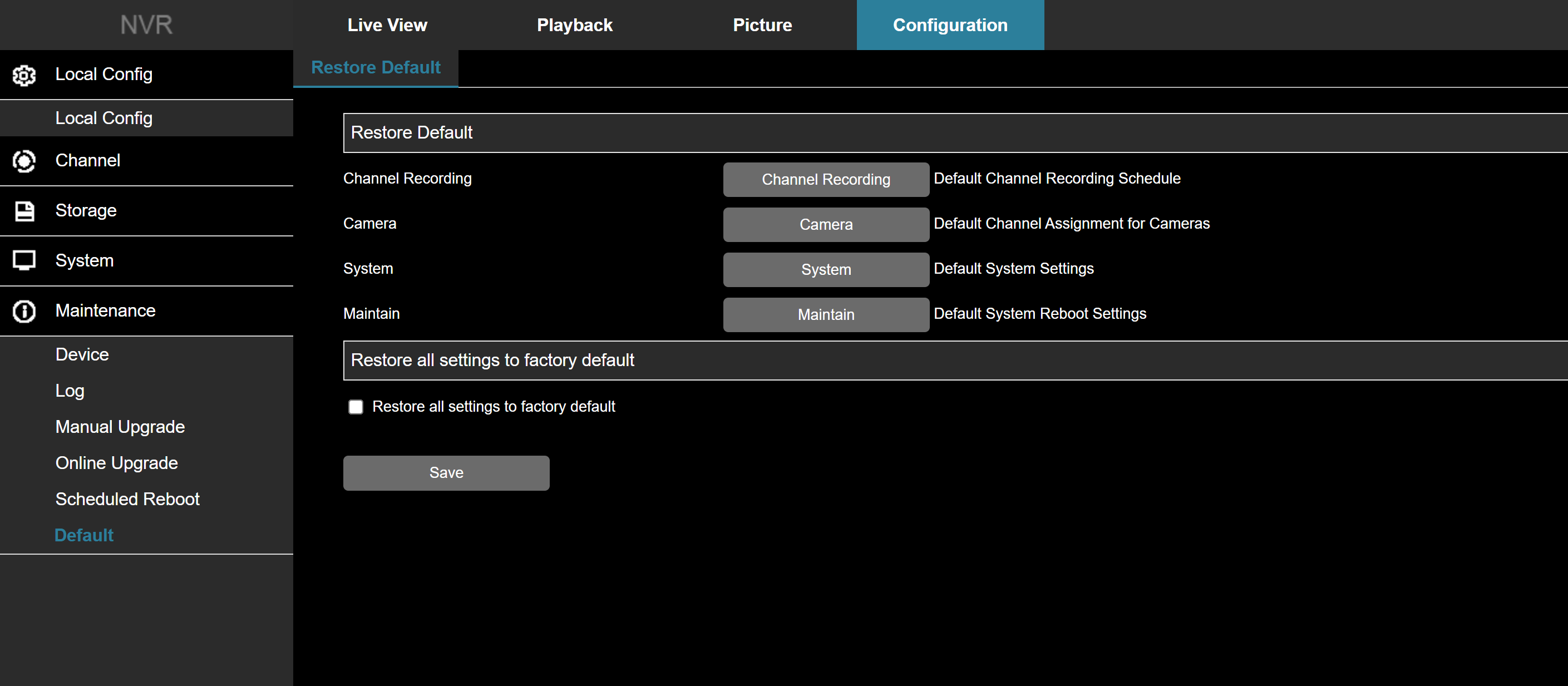
Click on the "Camera" button and the channel list will be wiped. You can start over.
Step Nine: Setting up Events on Your Cameras
Now that your cameras are solidly on the NVR, it is time to set up motion and smart events for all of your cameras. The good news is you can do all of that from the NVR interface.
Note:
Remember, the NVR does not analyze video or create events, the cameras do that. When you access the NVR menu to configure an event such as motion, you are really just using the NVR to configure the camera.
The only thing you configure on the NVR that is actually an NVR setting is the recording schedule.
Go to the Configure tab and select System/Motion Event or System/Smart Event. In the following example, System/Motion Event was selected
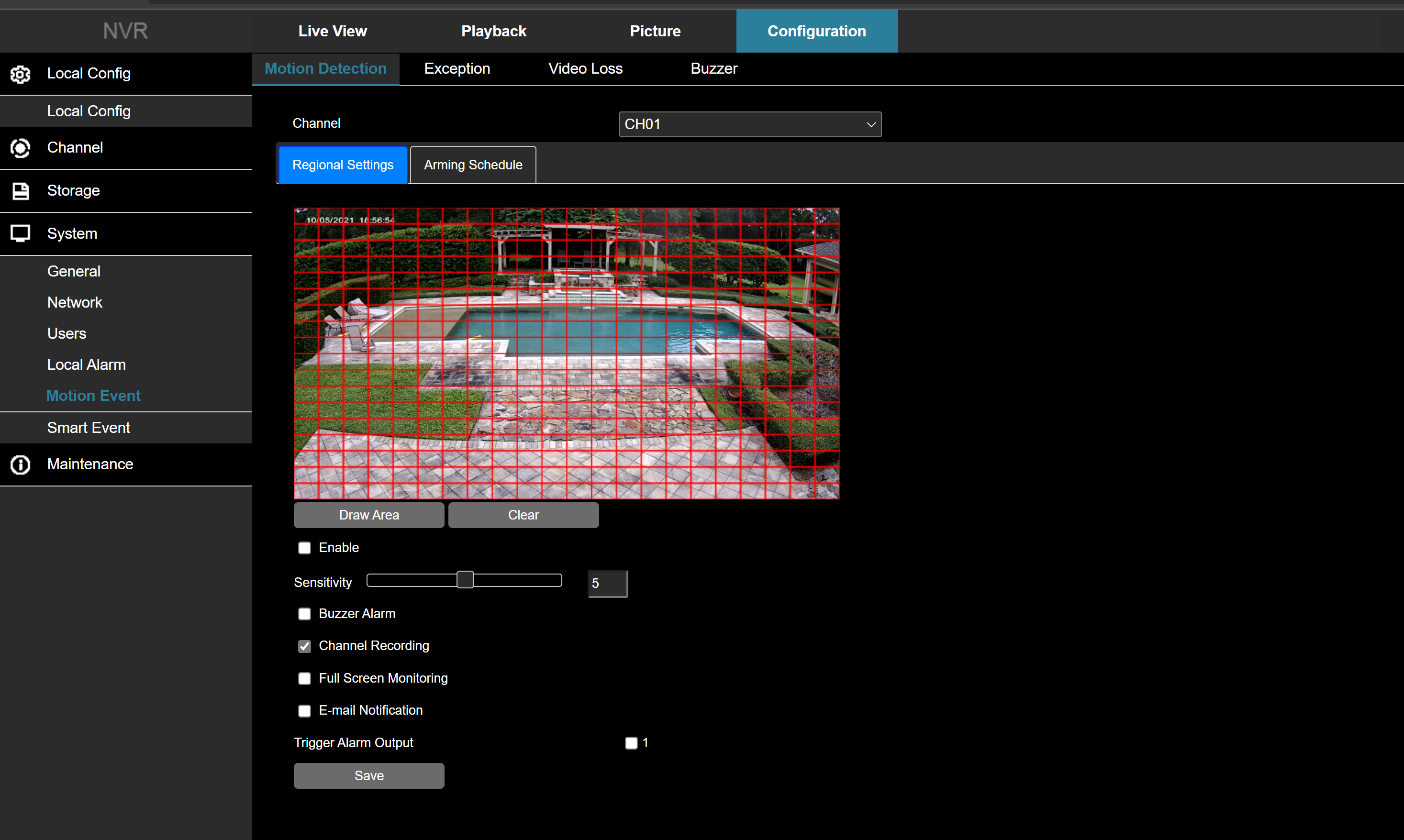
This configuration screen is extremely similar to the native camera configuration screen. If you make changes here to the motion grid layout for example and log into the camera, you will see the changes you made from the NVR web UI.
Warning:
You must have the Channel Recording option selected AND the event enabled for the camera channel to record and send push notifications. The Channel Recording box is selected by default from the factory. Do not deselect it.
The drop down menus for channel selection are smart and will only show you the channels that have cameras that support that event type.
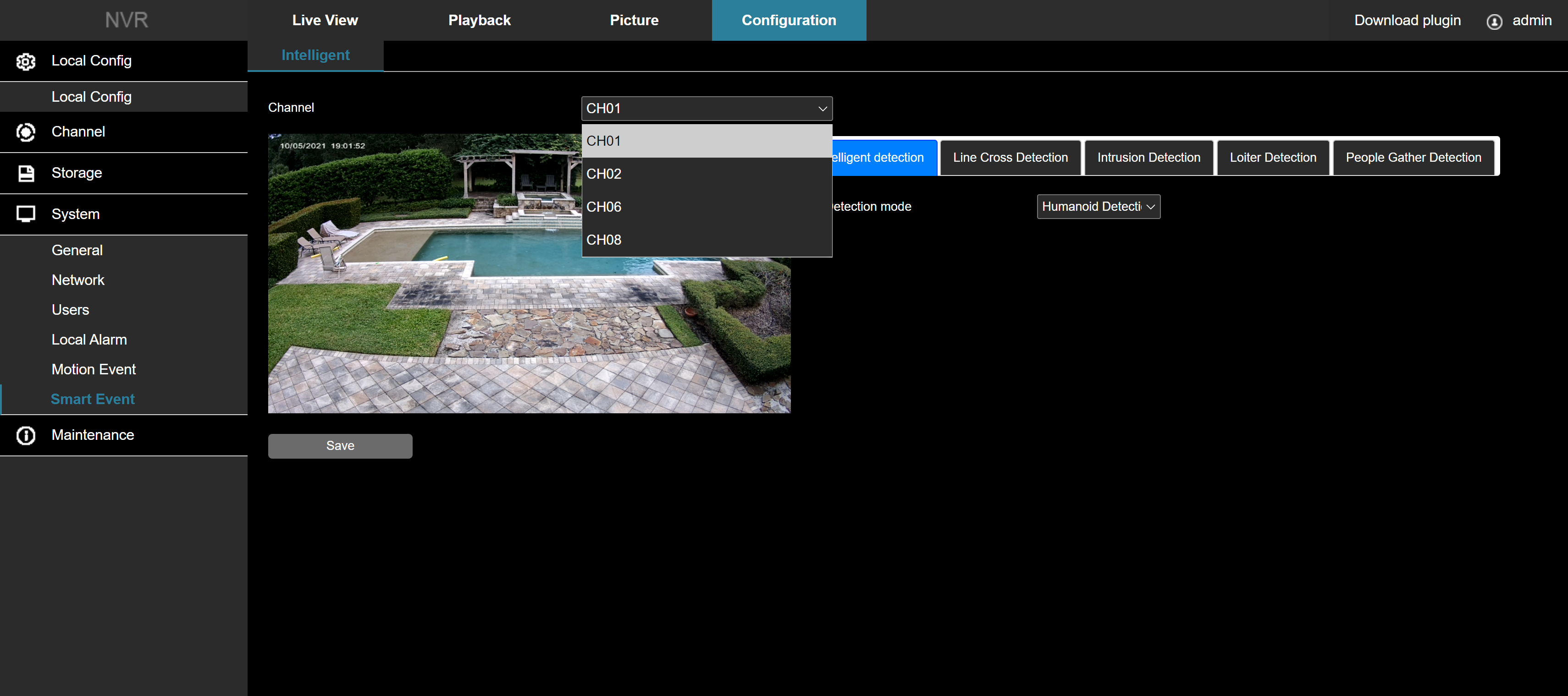
As an example, although this NVR has 10 cameras on it, only 5 support smart events.
See this article for motion detection setup.
See this article for smart event setup.
Although those articles are written referencing the camera web user interface, they are extremely similar on the NVR.
The recommendations related to Event Arming vs. Record Schedule apply to the NVR setup as well.
Caution:
It is easy to get confused by the multiple calendars that are in a camera or NVR. The event arming schedule shown above is the primary calendar you need to manage.
If your installation requires events to be disabled during certain hours of the day or days of the week ALWAYS do the following:
1. Use the event arming schedule to control when the event will be analyzed and propagated
2. Leave the record schedule on 7x24 record. DO NOT try to match the two calendars - use the event arm schedule to control when events happen NOT the record schedule.
Let's move on to recording!
Step Ten: Setting up Recording on Your NVR
The primary difference, other than capacity, between camera based recording and NVR based recording is the NVR can record all event types and full time record simultaneously while the camera can only record one event type to the SD card.
Recording schedules are setup under the Configuration Tab Storage/Recording Schedule.
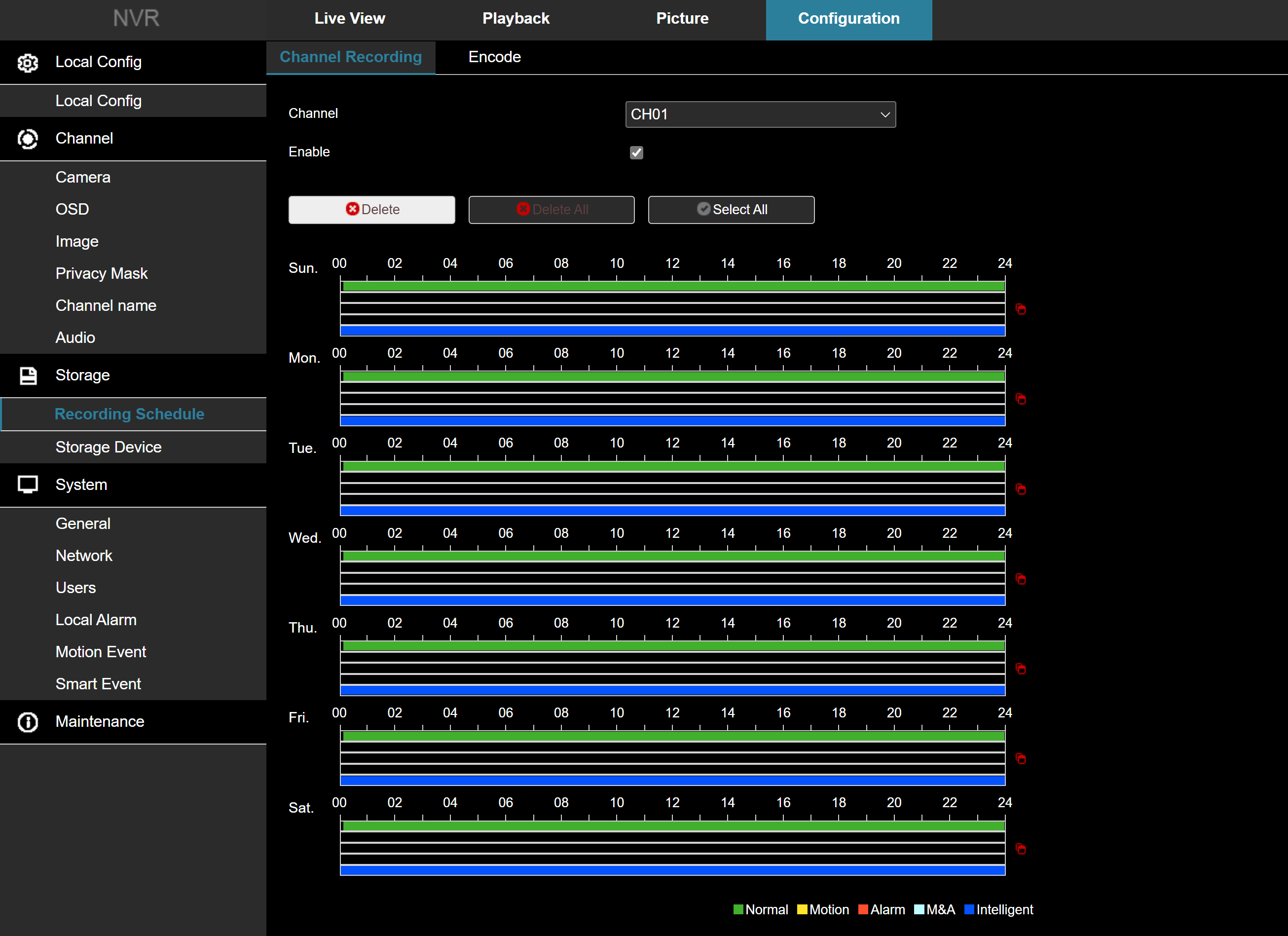
You can record any one or all of: normal (full time), motion, alarm, motion and alarm and smart events (intelligent).
Warning:
You must check the enable box for any recording to happen on the selected channel.
At the risk of being completely redundant, if you are arming an event such as motion or smart events you should set the recording to 7x24 and use the event arming schedule to control when the camera will propagate that event type. Doing so will ensure the user will always have an event to look at in the event log of the mobile app when a push notification is sent.
To change a recording parameter, just click on a line and the following will pop up:
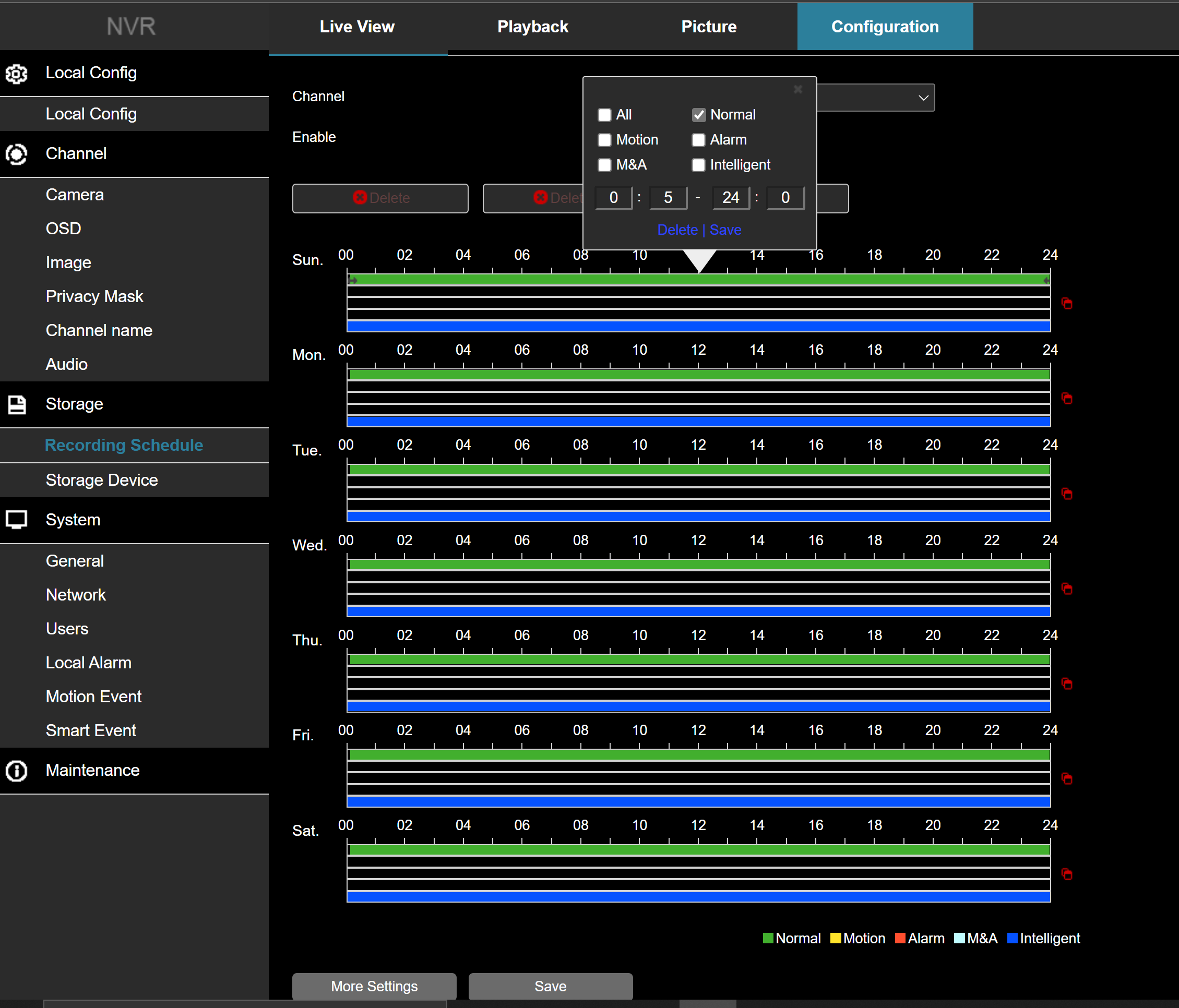
Lastly, "More Settings" is where you will find pre-record and post-record settings.
Step Eleven: Directly Accessing Your Cameras that are on the Physical Channels
The cameras that are on the physical channels will not show up on an IP scan and are not accessible on the general LAN.
Note:
The four channel NVR does expose the cameras on an IP Search scan, but are not accessible from a browser interface on the general LAN. The 8 and 16 channel NVR's do not expose the physical ports at all.
Enter the Virtual Host. You can access any camera, whether on the Virtual Channel or a Physical Channel (PoE Port) using the Virtual Host.
Go to the Configuration tab, Channel/Camera:
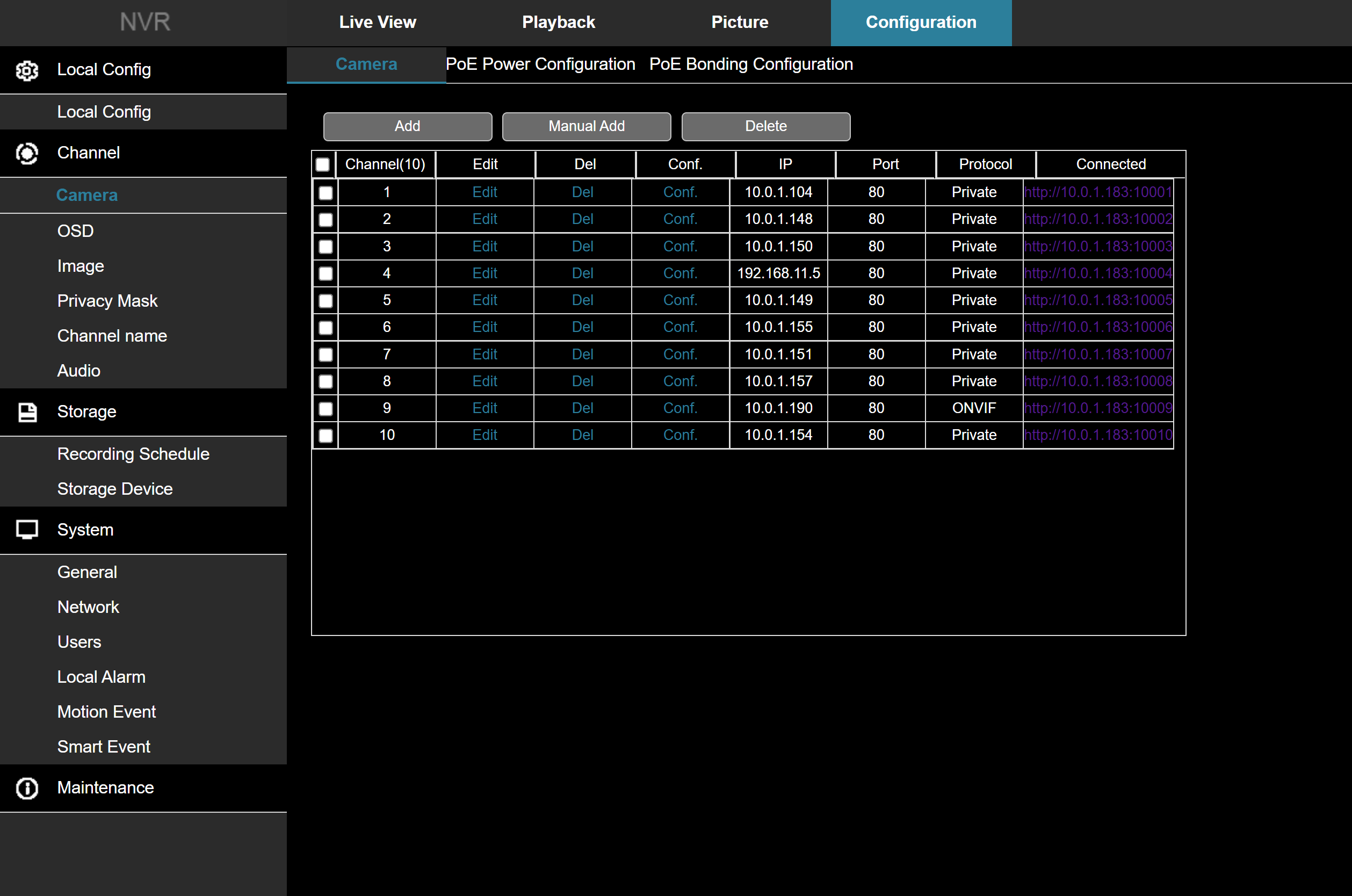
Click on the IP address in the right column and you will be taken to a login screen for that camera:
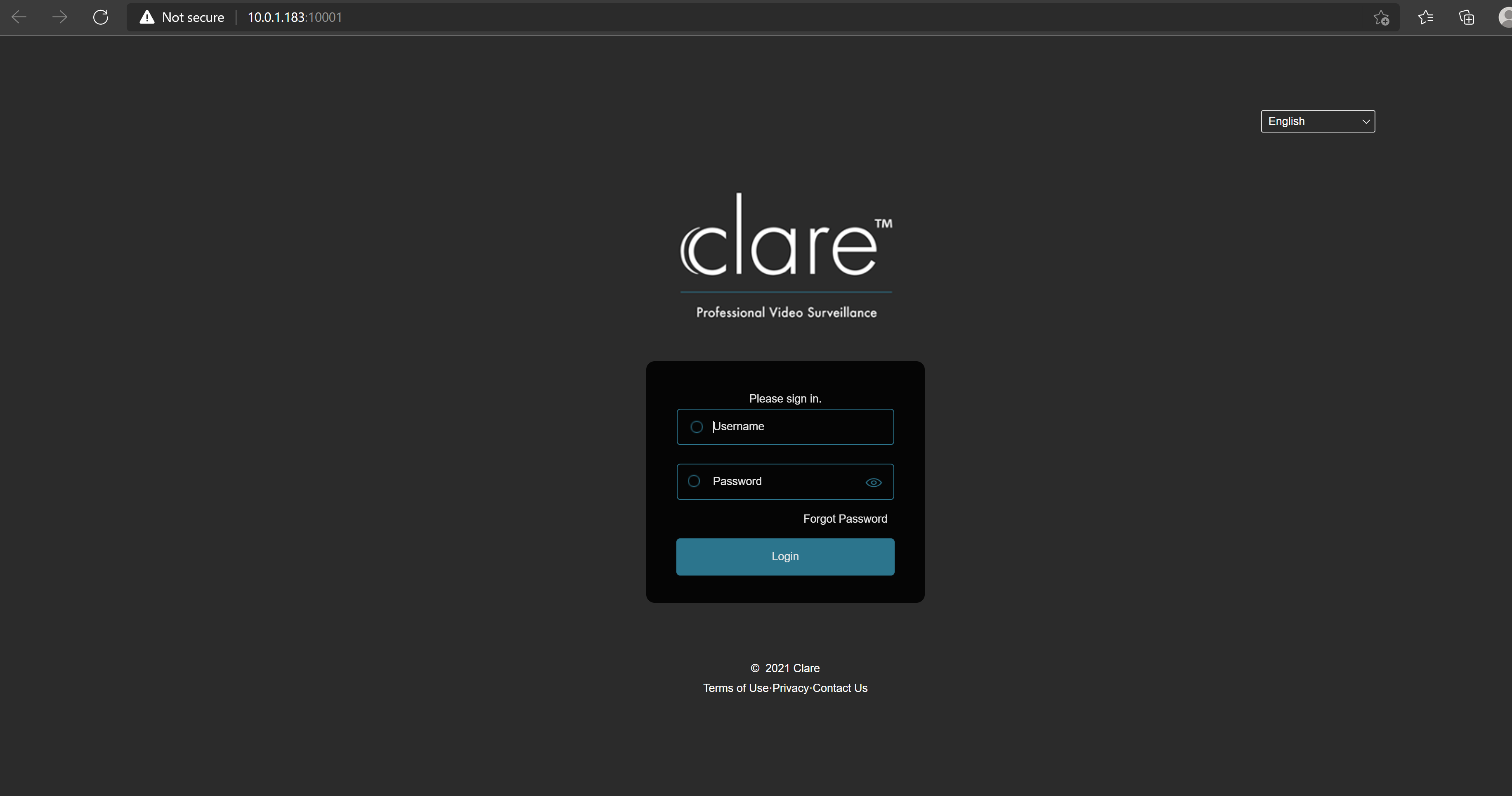
Notice the IP address is really the NVR with a port number. From this screen you can log into the camera, check settings, configure local record and manage firmware updates. You are accessing the camera directly.
Tip:
When integrating ClareVision cameras to control systems such as Control4, use the ClareVision Camera driver, not the NVR driver. The IP address you use is the NVR IP address with the associated port number as shown above. When you integrate that way, you are using the NVR to proxy access to the camera, but using an ONVIF driver to access video streams, snapshots, motion events and smart events. You can create push notifications and/or rules in the Control4 automation system based on events in the camera when you integrate in this fashion. (Events are not available in the NVR driver)
Use the NVR UserID and password, and we are in!
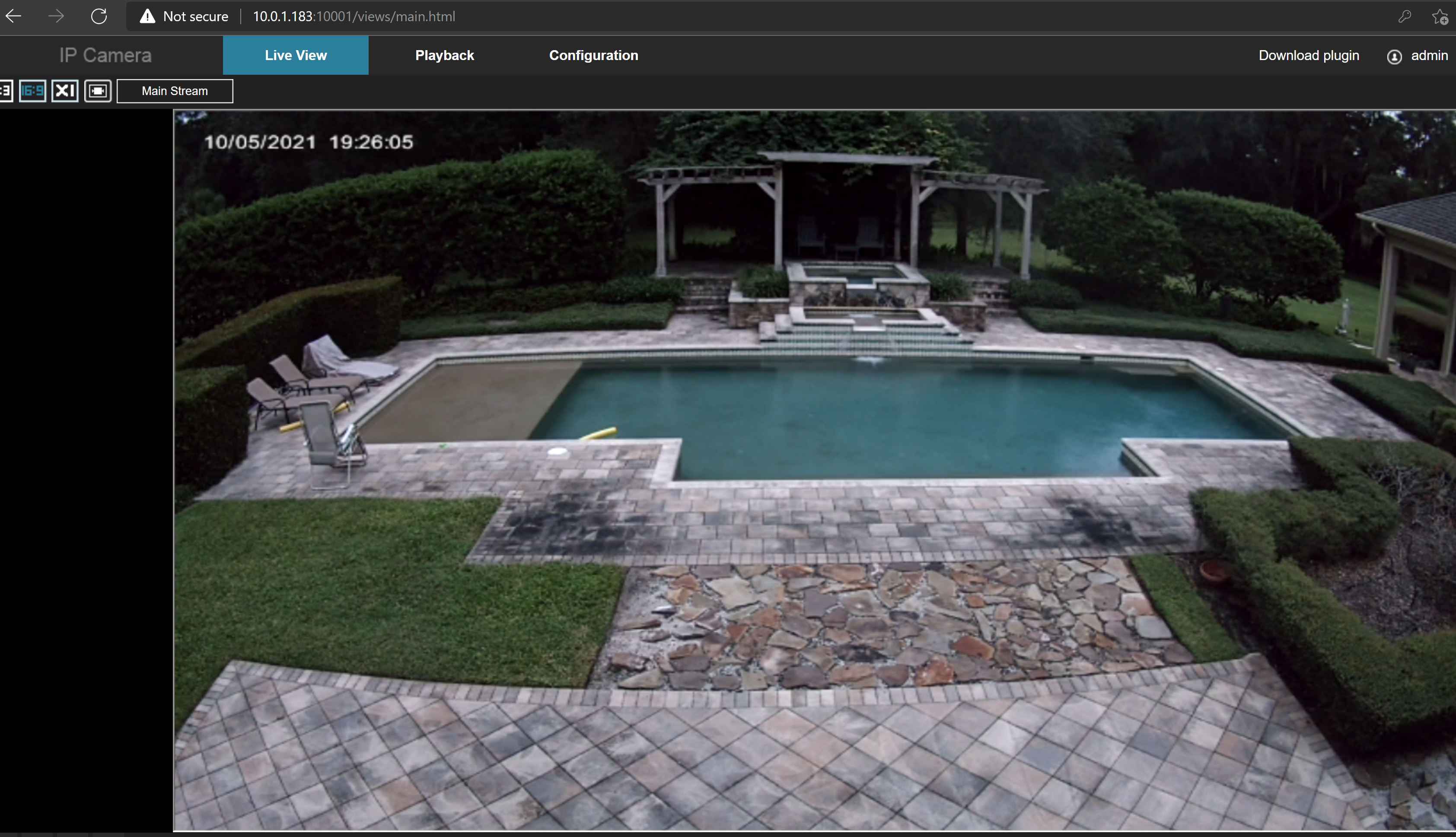
Step 12: Adding the NVR to the ClareVision Mobile App
Now that you have set up your NVR, it is time to add it to the ClareVision app. It is quite simple.
Launch the ClareVision App
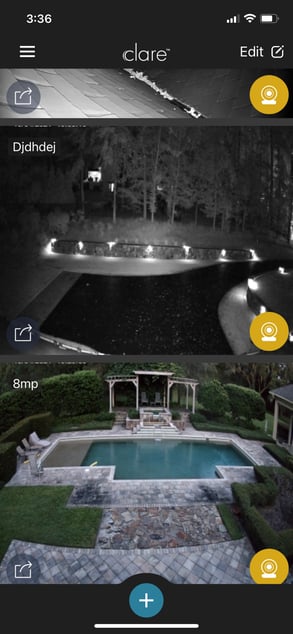
Tap the 'Plus' sign and you will be presented the following options:
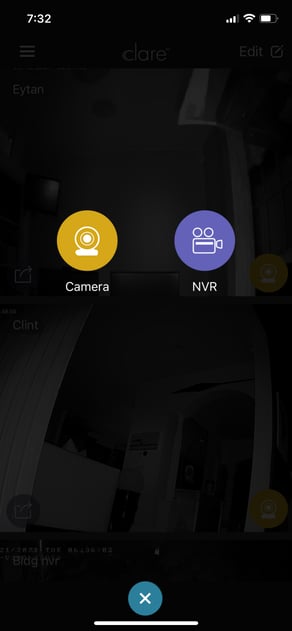 Selecting NVR will cause the app to bring up a different user interface than it does for an individual camera
Selecting NVR will cause the app to bring up a different user interface than it does for an individual camera
Tap the NVR Icon and you will be presented with the three options shown below.
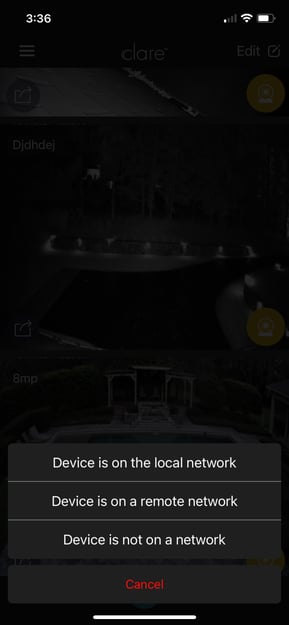
If you tap device is on the network, the app will scan the LAN for any ClareVision cameras or NVR's and present them in the following screen. Device is on a remote network provides you with the option of scanning a QR code for a camera on a remote network. The system will locate it anywhere in the world and provide you with a login screen to add the remote camera or NVR.
In our example, we tapped on "Device is on the local network" and two devices were found.
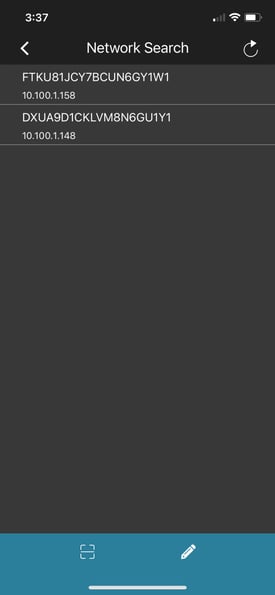
Tapping on a device brings you to a login screen where you may enter the credentials
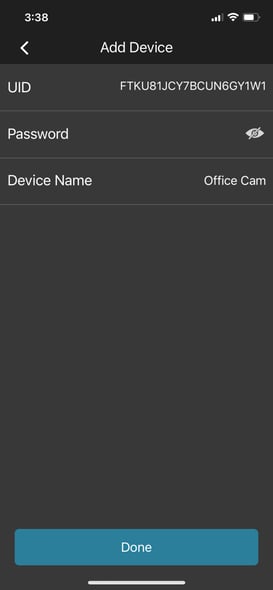
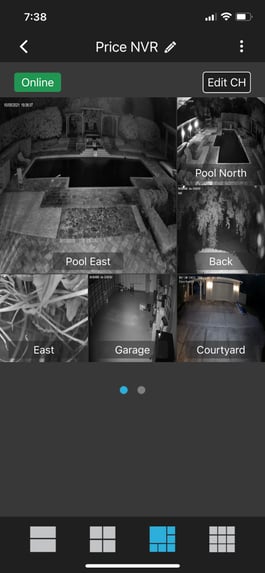
And DONE!
You just successfully installed, configured and enabled a ClareVision NVR with ClareVision cameras on and off the physical ports as well as adding an ONVIF camera. We then connected the NVR to the ClareVision mobile app. Push notifications and events as configured will automatically propagate to your customer's mobile device!
Closing:
This was not an attempt to explain in great detail every option/setting/configuration in the NVR. Rather this article was intended to give you a simple step by step guide to setting up and NVR with cameras in multiple configurations from multiple manufacturers. If you follow the steps in the order detailed you will win more than you lose.
Last Updated: 07/18/2022
